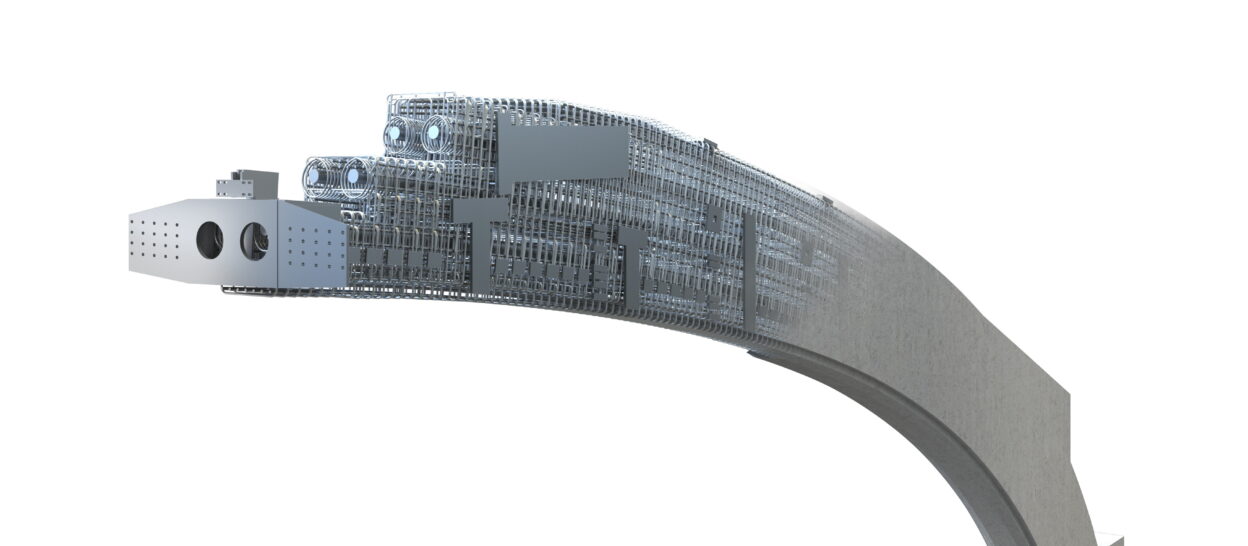
BIM
Understanding
Building Information Modelling (BIM) stands for a collaborative method with which all data and information relevant to a building over its life cycle are consistently recorded, managed and exchanged and coordinated between the parties involved on the basis of digital models. This enables a diverse and sustainable use of the information by all parties involved. The life cycle includes all phases of a building, starting from the initial ideas, planning, construction and operation to conversion and dismantling.
The collection of all data and information about a building during the planning and construction process forms the basis for its sustainable operation. In addition, this data allows us to carry out targeted conversion and dismantling and to recycle materials. Thus, the collection and processing of data from buildings is not an end in itself, but offers an invaluable data pool for sustainable use, especially when this data is collected not only for the individual building, but for all within an urban space.
Research
Digital TWIN Research Project
Together with various project partners, Werner Sobek developed digital tools and methods within the framework of the research project “DigitalTWIN” (Digital Tools and Workflow Integration for Building Lifecycles) in order to better interconnect services, processes and workflows along the entire value chain of the building industry and to digitally close open interfaces.
Central challenges for the building industry are changing responsibilities and accountabilities throughout the building lifecycle, internationally differing standards and regulations, as well as constantly changing partners in planning, production and operation. The DigitalTWIN research project therefore investigated how an open platform architecture, further developed broadband communication technology and VR-AR technologies can simplify planning, production and coordination with the construction site and provide the user with a trustworthy and flexibly expandable communication and administration infrastructure.
The research project focused on understanding systemic dependencies and interactions. The research partners therefore came from very different industries and fields of activity. The project was funded by the Federal Ministry for Economic Affairs and Energy (BMWi) as part of the Smart Service World II funding programme. In addition to Werner Sobek AG, the research partners involved were se commerce GmbH (a company of the seele group of companies), the Heinrich Hertz Institute of the Fraunhofer Society for the Promotion of Applied Research, Telegärtner Karl Gärtner GmbH, Carl Zeiss 3D Automation GmbH and planenbauen 4.0.
The project partners worked on the core topics of the research project in various work packages; the results then flowed into a joint demo landscape and were presented to the public in several hybrid events. The work of Werner Sobek AG focused on the interfaces between planning and production. Above all, the exchange of information by means of open data formats was examined in detail. The focus was not only on the well-known IFC format, but also on database-based JSON interfaces for the exchange of simplified geometry data, which were successfully used and implemented in demos.
In addition, user interfaces were developed for use on smartphones, tablets and PCs for traceability and for displaying a transparent planning process, as well as a platform-based update process for data exchange.
Our Services
Werner Sobek has been successfully applying the BIM method to the planning of national and international projects for many years. This extensive experience ensures the highest quality standards of our planning and consulting services – even for complex building projects.
We offer planning and consulting services for architects, clients and construction companies. These BIM services range from model creation and BIM coordination as a specialist planner, overall BIM coordination as a general planner to BIM management for the client. In each role, we can draw on our comprehensive digital tool and process expertise within the company.
Based on the overarching project goals, we advise clients on the identification of project-relevant BIM goals and use cases. We implement the resulting specifications of the client, the so-called client information requirements (AIA), in the contractor’s specifications, the BIM execution plan (BAP), and update it together with all project participants. The creation of information in digital professional models and their coordination with all parties involved as well as their diverse use in BIM use cases have been established in our work processes for years.
The use cases include requirements planning, planning variants, coordination of the specialist trades, planning progress control and quality inspection, visualisation, derivation of planning documents, dimensioning and verification, quantity and cost determination, model-based life cycle assessment and sustainability certification, BIM2Field, and many more.
The BIM method is used at Werner Sobek in a wide variety of project constellations with various external partners (“BIG BIM”). We are very familiar with both “closed BIM” and “open BIM” and the associated open data formats. Even if BIM is not part of Werner Sobek’s assignment, a project is always processed internally using the BIM method (“little bim”).
Awards
Our in-depth involvement with all aspects of BIM is also reflected in a number of recognitions we have received, including honours at the BIM Awards of the BIM Cluster BW:
- BIM Award 2016, Distinction: ThyssenKrupp Testturm (TKT), Rottweil
- BIM Award 2016, special award: National Museum of Qatar (NMoQ), Doha/Qatar
- BIM Award 2021, Finalist Category Building Construction: Kuwait International Airport – Terminal 2
Our research work in the field of BIM has also already been recognised by buildingSMART:
- Awards Program 2020: Special Distinction in Professional Research “Digital TWIN”.



















